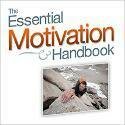Breath Meditation - Discover The Ancient Secret of Using The Breath As A Tool For Sharpening The Sword of Your Consciousness!
Placing your awareness on the breath lies at the heart of many meditation techniques. Breath meditation is among the easiest and the most effective forms of meditation techniques for a deep relaxation and stress relief.Breathing meditation is equally useful for beginners and advanced meditators. You can begin the practice of breath meditation from 10-15 minutes per session. Later, you can advance by increasing the duration of meditation gradually or adding more breathing meditation sessions in the day.
Posture for Breath Meditation
The ideal posture for breathing meditation techniques is to sit in an upright posture with the spine erect. You can place a cushion or a meditation mat on the ground and sit on it. You can also meditate in the chair with your feet firmly on the ground.Keep your spine erect, but don't strain it to keep it straight. Sit in a comfortable posture so that you can be relaxed as well as alert during meditation. Sitting erect helps to keep us alert during meditation.
Breath Meditation Instructions
1) Sit comfortably. Close your eyes. Relax in the present moment and gently notice the sounds, sensations, etc. arising in your surroundings and any thoughts and feelings arising in your mind. There is nothing that you are going to do about them, just be aware of them.This shall help to calm down your mind and it shall settle down naturally.
2) Be aware of the breath. Now bring your awareness towards the breath. Notice how it moves in and out through your nostrils. Continue to breathe naturally, without trying to breathe in a certain way. Notice the sensations arising in your nostrils, diaphragm, lungs and abdomen as the breath moves in and out through your body.
3) Be with the breath. You'll find that many times your mind wanders away on different thoughts and loses its awareness on the breath. It is fine and does not matter. It is natural and every meditator faces this phenomenon while beginning breathing meditation. Just bring back your awareness on the breath when you realize that you have gone off track.
4) Cultivate non-judgmental witnessing. By and by, your mind calms down and you are able to witness your thoughts and emotions in a non-judgmental way. Keep watching your thoughts, bodily sensations, emotions, etc. as they arise, while you're watching your breath with awareness.
5) Let go. With regular practice and as you become more proficient in breath meditation, you shall become aware of the various tendencies of the mind.
You shall notice the tendency of your mind to hold on to certain experiences while resisting others. By keeping a witnessing and non-judgmental frame of mind, you can let go of all the patterns, clingings and conditionings of the mind gradually.
6) Sharpen the sword of awareness. Initially, it might be appropriate to scratch when any feeling of itching, etc. arises on your body. However, in a few days of practice, you will realize that the same attention and awareness that works well with thoughts and sounds, works equally well with physical feelings and sensations as well.
By just being aware of the bodily sensations, you will realize their impermanence. That they appear, stay for a while and then disappear. And that's the phenomenon of life itself - nothing lasts forever. Situations come and go, and change is the only thing that is permanent!
Return from "Breath Meditation" to "Breathing Meditation"
Return from "Breath Meditation" to Meditation Techniques Guide Homepage

